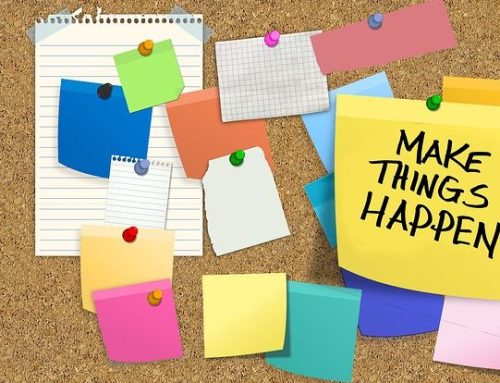How to Save Time on Email: Write Longer Emails
January 27, 2020
Categories: Organization
Most of us spend a lot of time on email. At many of our workplaces, email is the primary mode of communication. We are on email constantly. Although extremely convenient, email can be challenging to navigate because it is very distracting. It takes our attention away from our most important tasks, and directs us to whatever feels most urgent in the moment.
So why on earth would I write a blog post on writing LONGER emails?
Back-And-Forth Communication
Here’s the idea: Part of the reason email takes up so much of our time is that we use it for a lot of back-and-forth communication. Even if we want to do something relatively simple like schedule a meeting or discuss a project, we might write and receive several emails throughout the day to do finish up that one task. Each time we respond to an email, it distracts us from our most important work.
Sometimes writing more detailed and thorough emails can actually save us time in the long run.
3-Step Process for Writing Longer Emails
Here is a 3-step process I use to write longer emails (but actually save email time in the long run):
- Identify the overall purpose of the email communication. The first step is to think about the end goal of the email correspondence. What do you ultimately hope to happen as a result of your email communication?
- Identify all the steps that are needed to get to the end goal. Second, think through all the things that need to happen in order for you reach the end goal of your email correspondence.
- Write down all the steps in one email. Finally, write out all the steps that will get you to the end goal and put it in one email. This email will take a little longer to write because it will be more detailed. But ideally, you will be able to reach the end goal of your communication in one correspondence, rather than having a lot of back-and-forth emails throughout the day.
Example: Scheduling a Meeting
Here’s an example from my own life that happened the other day: I was emailing one of my graduate students about a project we were working on, and it was clear that he needed some help with the next step. I thought it might be helpful to schedule a meeting to discuss what he needed to do.
Normally, this is what I would have done:
- Email #1: Ask if he wanted to schedule a meeting to discuss next steps.
- Email #2: He replies yes.
- Email #3: Ask what days/times work for him over the next week.
- Email #4: He replies with a few possible times.
- Email #5: These times may or may not work with my schedule. If they don’t work with my schedule, I would respond with some alternate times.
- Email #6: He replies with a time that works and we schedule the meeting.
Instead, I worked through the 3 steps:
- Identify the overall purpose of the email communication. The overall purpose of the email communication was to schedule a meeting with my graduate student to discuss next steps on our project.
- Identify all the steps that are needed to get to the end goal. Here were the steps I identified:
- Ask if he wanted to schedule a meeting.
- Give some possible days/times.
- See what works with his schedule.
- Schedule the meeting.
- Write down all the steps in one email. I wrote a longer email that included all of these steps. I asked whether he wanted to schedule a meeting. I gave some possible days and times that worked with my schedule. I asked him to respond with what worked with his schedule. I asked him to suggest some alternate days/times if none of my times worked with his schedule.
The strategy worked. He emailed back with the day/time that worked for him, and the meeting was scheduled. The long email took slightly longer to write (although not much longer), but the number of email correspondences was reduced by 2/3, which saved our time in the long run.
Action Step
If you’re getting bogged down with email, try the 3-step process of writing longer emails. It might take a few extra minutes in the short run, but it will save you time in the long run.

Related Thoughts

Subscribe To My Newsletter
Join my mailing list to receive the latest blog posts.
Receive my e-book “The Mental Health Toolkit” for free when you subscribe.




